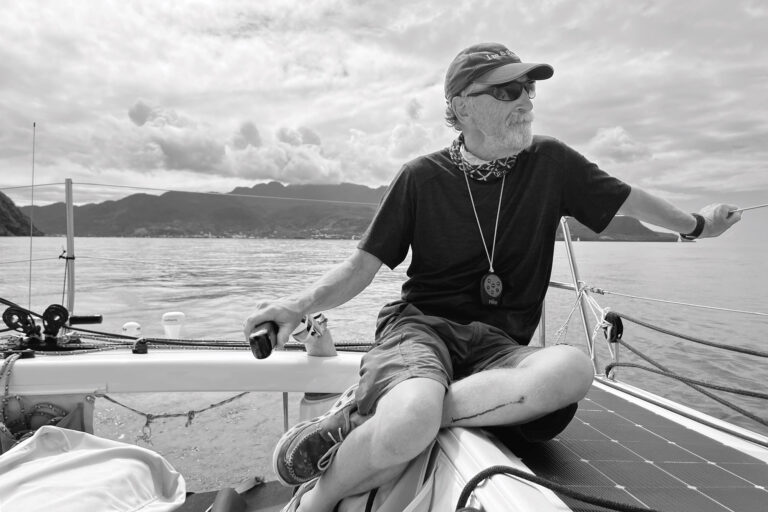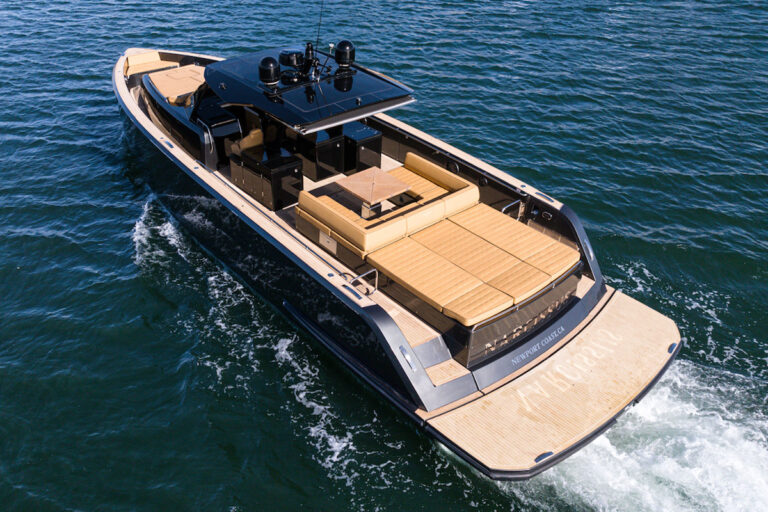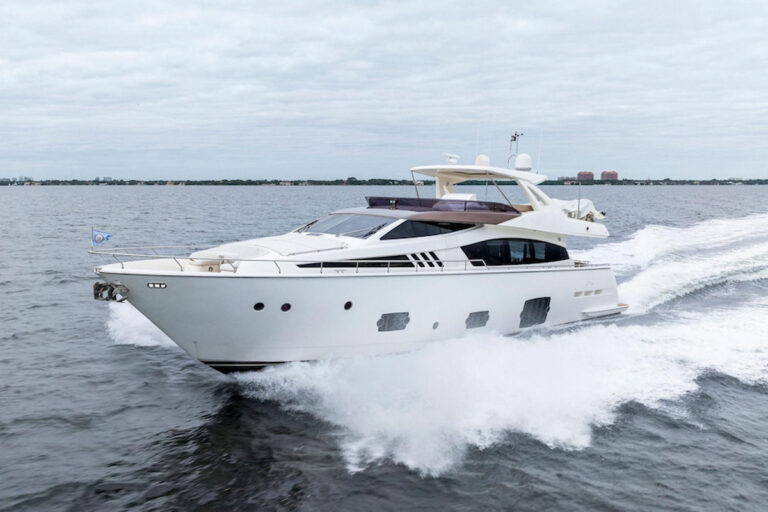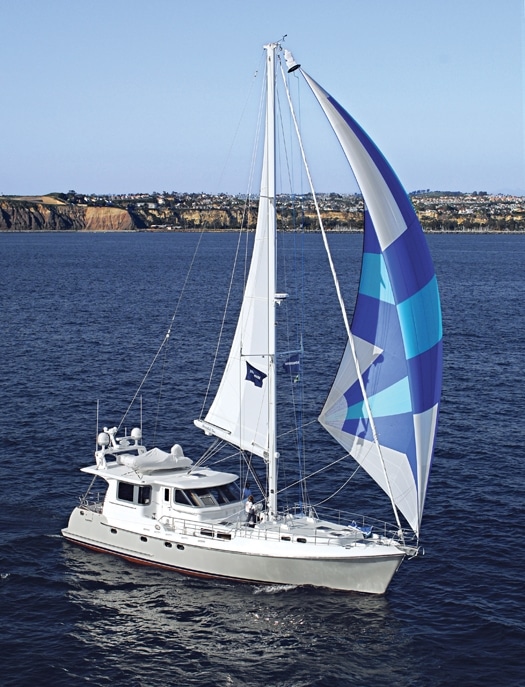
ytgjul14nord525.jpg
Some new boat buyers have a difficult time leaving the dock for that first long voyage. Not so the owner of NordSail One, the first of Nordhavn‘s new 56-foot motorsailer series. Susan Felton and her fiancé-captain John Graham had a powerful incentive not only to get their boat offshore of Newport Beach, but to flee California entirely. It was time for them to go cruising or face state taxes on their recent purchase.
Felton had been negotiating with Nordhavn to purchase a trawler when fuel prices spiked in 2008. Though Nordsail One had been built as a factory demo boat, its promise of greater fuel efficiency caught Felton’s attention. When she offered to buy the motorsailer, Nordhavn could hardly refuse. Since then, the company has sold seven more.
Felton and Graham shared a dream of sailing the happy isles of Polynesia. Trouble was, neither had any sailing experience. So, the plan was for Graham to take NordSail One up the coast to Washington, where Felton would join him for a summer of cruising and learning to sail. Graham, a shaggy-haired Scots engineerturned- realtor, hired an experienced California sailor named Ken Madeja to accompany him, and Nordhavn suggested that I go along, too, to represent the East Coast.
En route to California I was reminded of a joke overheard at the Miami International Boat Show. Question: What is the biggest difference between a sailboat and a trawler yacht?Answer: A sailboat only motors 90 percent of the time. Granted, racers and daysailers continue to enjoy pure sailing, but once they dedicate themselves to cruising, “auxiliary” propulsion trumps canvas, as anyone who has witnessed the seasonal sailboat migrations would testify. The usual scenario is a boat with a tightly sheeted main, trailing exhaust, and with a crew encased in a faux pilothouse of Sunbrella and isinglass.
After a few years of motoring with one sail raised, many sailors have embraced the obvious and traded into trawlers, and Pacific Asian Enterprises has been a leader in meeting this new Horn of California.” Going north on the West Coast is a notorious slog in general, but Conception is the worst-a place where 30-foot waves are not uncommon. Most of the voyage was to windward, so we advanced market demand with the Nordhavn series of full-displacement ocean voyaging powerboats. PAE was founded by sailors, and by the late 1980s, their efforts had produced more than 250 Mason sailboats at the Ta Shing yard in Taiwan. By then the sailboat market was in decline, prompting the company to reflect on how their Mason customers- and sailors in general-were actually using their boats.
With inspiration from Robert Beebe, author of the seminal work “Voyaging Under Power”, PAE designed the first Nordhavn, a 46-footer capable of crossing oceans. (See “No Regret,” April 2009). Amazingly, the concept faced ridicule and resistance at the time, and PAE’s Taiwanese partner even refused to build it. Now hundreds of Nordhavns roam the oceans, and the company appears to be weathering a down economy much better than the industry as a whole.
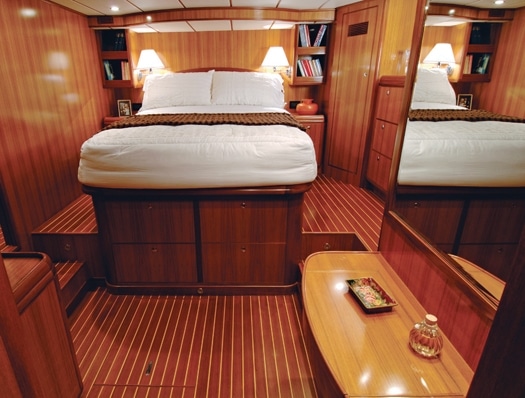
| | |
One might have expected PAE to launch something like its new Nordhavn 56 sloop-rigged sailing trawler years ago-and, yes, Nordhavn does call it a motorsailer, but only for lack of better terminology. Though there have been many good ones over the years, motorsailers never got much traction in the marketplace. Notoriously branded as a compromise that neither sailed nor motored well, this 50-50 breed has languished on the drawing boards. So, traveling to California in April for a ride on the N56, I really had only one question: Would she sail or would she not?
Yes, I quickly learned, the N56 will sail. She can exceed five knots in 12 to 13 knots of breeze, and tack through 130 degrees on the compass-obviously, she’s no J/Boat, but she is able enough to distance herself from a lee shore under sail alone. This respectable performance is due to a full keel and powerful mainsail combination, resulting in a hull that draws 6½ feet and a rig that stands 73 feet above the waterline.
Some East Coast cruisers might view that kind of air draft as a dealkiller because it eliminates the option of transiting the Intracoastal Waterway with its 65-foot bridges. Jim Leishman, cofounder and vice president of PAE, says Nordhavn is developing a short-rigged version to address that concern, though the draft is non-negotiable, mainly to accommodate a 36-inch prop.
Our 1,100-mile, seven-day shakedown began with a forecast that called for moderating seas at Point Conception, also know as “The Cape under a close-hauled mainsail with her 165-horsepower Lugger engine ticking over at about 1500 revs. The apparent wind filled the sail and dampened our roll, leaving a tolerable fore-and-aft motion as we climbed and cut our way through 8- to 10-foot seas.
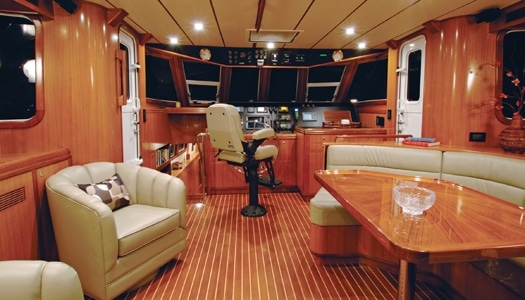
| | |
Graham and Madeja, a former airline pilot, spent the first couple days experimenting with the 56’s variable-pitch propeller, adjusting in search of the sweet spot where speed and fuel economy intersect. Settling into the routine of the watch rotation, we got to know one another and got along-mostly. Graham is a self-described “clean freak,” while Madeja enjoyed a hearty appetite and “left a wake” when he ate, which he only refrained from doing while sleeping. Graham responded by regularly dusting for crumbs in the salon-it was the first time I ever saw a Swiffer employed in a seaway.
As we approached Oregon, Graham was eager to take on fuel so he could begin documenting NordSail One’s tax-exempt status in California with receipts. We headed in and though a lull in the weather had produced calm conditions in the ocean, the same was not true inside Port Orford’s surge-wracked “harbor.” The “marina” consisted of two huge cranes and a storage area, where every boat was hauled and blocked at the end of every day-a marina with no slips or moorings.
For a guy who stressed about crumbs, Graham took our slamming against the pier pretty calmly as he topped off NordSail One’s three fuel tanks. We thanked the friendly dockmaster as he lowered a can on a string to take payment (cash or check only). He joked about how Port Orford’s nickname was now “Port Awful,” and I admitted that he was unlikely to ever see us again or anyone we ever spoke to.
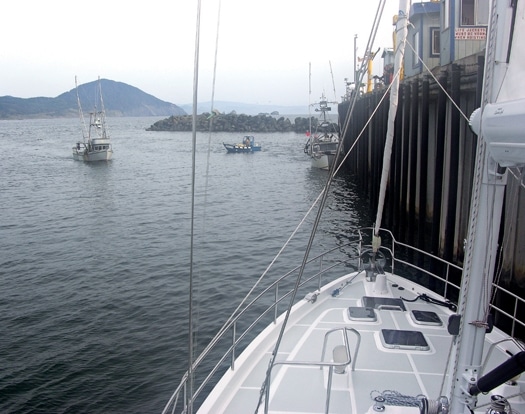
| | |
After Port Orford, the breeze freshened and the wind clocked around behind us in rain squalls. During the calm we had rolled the main most of the way into the boom to minimize flogging. When the breeze came up again, developing 12-foot following seas, the boat began skating as her fine-entry bow steered left and right in a fight with the autopilot. I stepped onto the side deck and unrolled the jib about halfway. The pull of the headsail straightened us out, eased the strain on the helm, and took some load off the engine. We enjoyed the easier motion in the comfort of the heated pilothouse, thereafter running close to our 9-knot hull speed.
Clearly, the N56 can make hull speed under power or sail alone in 20-knot winds and up (typical trade-wind conditions). Seven knots was NordSail One’s average speed from the harbor at Newport Beach to Neah Bay, our first anchorage just inside the straits of Juan de Fuca in Washington. Leishman says Nordhavn trials showed the N56 making 6.5 knots in calm seas while burning two gallons per hour. At that speed and with its 750-gallon fuel capacity, the boat would have a range of about 2,500 nautical miles, while reducing the speed to 6 knots would increase range to almost 3,000 nautical miles. “Of course, the normal operating speed for coastal cruising will be closer to 9 knots, and long ocean passages will take full advantage of the sails, allowing exceptional speeds with little or no fuel consumption,” Leishman claims.
The allegation that sailors are motoring 90 percent of the time obscures an important truth: That other 10 percent of the time, when they are sailing, it can be better than sex. In a rip-snorting beam reach over following seas, the helmsman of the smallest sloop looks toward the superyacht with pity, because those people cannot feel his ecstasy. There is no equivalent experience on a powerboat.
Nordhavn’s new 56-footer will appeal to sailors looking for the comforts of a motoryacht but unwilling to sacrifice the sublime pleasure of sailing, or in the case of Felton and Graham, being able to ride to paradise on the breath of Matuu, the Polynesian god of the north wind.
Nordhavn, (949) 496-4848; **www.nordhavn.com**
Click here to view a photo gallery of the Nordhavn 56 motorsailer.





